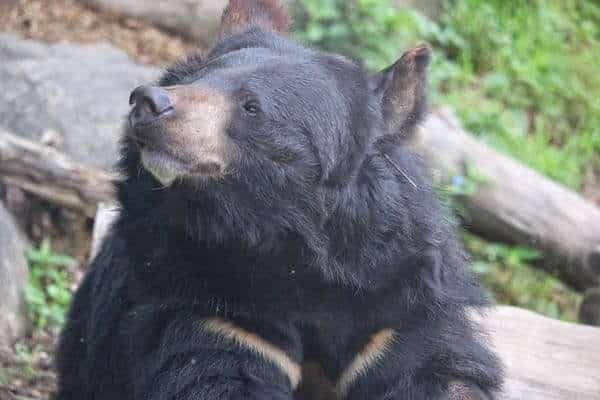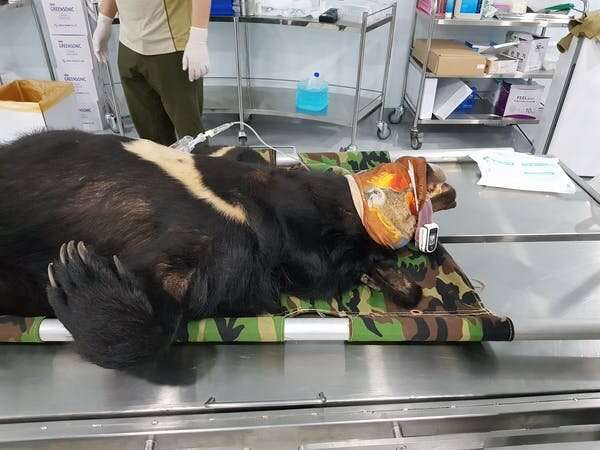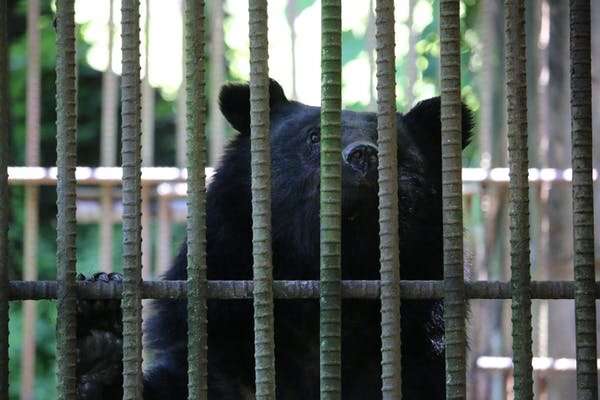Il rewilding, which I have been talking about in various ways for a while, has popularized the idea of reintroducing lost species into modern habitats. The reintroduction of the wolf into different habitats, for example, has likely benefited other species as well, demonstrating how these activities can not only slow biodiversity loss, but also reverse it.
It is one thing to repopulate woods, or large parks, and another to attempt the operation in places much closer to people, be it lynxes in Great Britain or cheetahs in India. Putting large wild animals in close proximity to humans is not easy, with all the potential problems it could pose in terms of human-wildlife conflict. In South Korea, a country not too different from Italy in terms of population density, environmentalists aim to restore the native bear population. Asiatic black bears or “moon bears”, to be precise. Although slightly smaller than their North American cousins, these bears are still large wild animals, capable of causing fear and alarm and posing a risk to human life and property.
How will they do it?
In the 90s, the Jirisan area had become the last foothold of the Asian black bear in South Korea. First the Japanese colonial regime, and then excessive hunting had done enormous damage. At the end of the century, they remained “officially” five wild bears across the country: the species was on the verge of extinction.

Why do I say “officially”?
All things considered, those 5 weren't the only bears in the country. A large population of bears were found on farms that extracted bear bile and other substances for traditional medicine, as well as meat for food. Since the 90s, South Korea has cracked down on trade in bear parts, but even today the remaining population of about 380 captive bears still far exceeds that in nature (only 70 specimens in 2021).
A small platoon of bears to leave
These farm bears could have been the ideal animals to rebuild a wild population. But they belonged to a number of different subspecies, and were potentially at risk of disease. For this reason, bears were imported from China, Russia and North Korea: the first six in 2004, right in the Jirisan area. It was the beginning of an incredible triumph.
The secret? Low expectations. No grand claims were made about reshaping the relationship between humans and the natural world, and no changes were promised to age-old ways of managing landscapes, things that often appear in debates about rewilding. Environmentalists in South Korea simply set a modest initial goal: bring back a population of 50 specimens in a single protected area.
Success is in the details
Some details are the basis of what I can easily define as a perfectly successful great undertaking. First of all the “soft” releases, where bears are kept in enclosures to acclimate to their surroundings before being released. Then the broad monitoring, which greatly increases the probability of survival. Finally, the tracking: specimens that stray too far are returned to the national park.
Also captive breeding, backed by impressive veterinary expertise, has helped the population grow. A milestone involved the world's first successful use ofartificial insemination for this bear species, an advantage for maintaining genetic diversity in a small population. Bears injured by traps or traffic accidents have also been successfully reported back to the wild.
Result? The initial goal of 50 bears has been exceeded and the population now exceeds 70 bears.

New challenges for the bears
A recent study suggests that Jirisan National Park may be close to reaching its bear limit.
So far, conservationists have had considerable success in building support to restore bears in Jirisan National Park with educational programs, presentations for residents and hikers, a center where visitors can learn about the reintroduction program, and even the use of bear mascots. moon bear for the Pyeongchang 2018 Winter Paralympics.
Now, though, the (for now) sporadic appearance of bears outside the national park still attracts prime-time media coverage. This can hinder efforts to cultivate tolerance and maintain a reasonable dialogue with the public about the realities of living with bears. People who feed bears remain a problem, as does the illegal snare for game species, which can seriously injure them. As South Korea reaches the next stage of its reintroduction program, Is the country ready to accept bears outside of a protected area? Because that's what it's about. Domestic partnership.
It will be fascinating to follow these bears in the coming years as conservationists grapple with these questions. And Asiatic black bears are just the beginning. South Korea has established programs to restore the red fox, surprisingly rare in the country, and the long-tailed goral, a goat-like mammal whose populations have been depleted by poaching and habitat loss.


